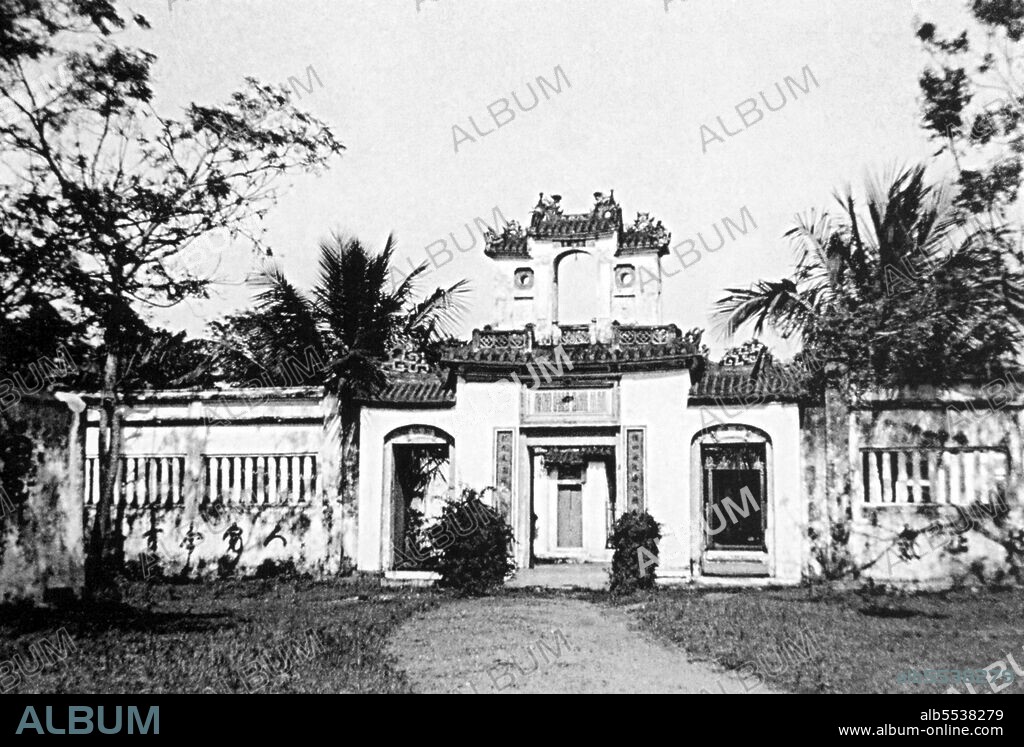alb5538279
Vietnam: The Fujian (Phuc Kien) Assembly Hall, Hoi An (1930).

|
Ajouter à une autre Lightbox |
|
Ajouter à une autre Lightbox |



Avez-vous déjà un compte? S'identifier
Vous n'avez pas de compte ? S'inscrire
Acheter cette image.
Sélectionnez l'usage:

Titre:
Vietnam: The Fujian (Phuc Kien) Assembly Hall, Hoi An (1930).
Légende:
Voir la traduction automatique
Phuc Kien is the Vietnamese for Fujian, and this, the richest of the several Chinese Assembly Halls in Hoi An, was founded by merchants from Fujian Province. It also serves as a temple dedicated to Thien Hau, a goddess who specially cares for seafarers like the Fujian merchants in times past. The small temple complex is set back from the street beyond a courtyard. Here the Sea Goddess Thien Hau presides at the centre of the main altar in the first chamber. Her attendants on either side inform her whenever there is a shipwreck, so that she can intercede on the part of the mariners. To the right of the altar is a large model of a Chinese sailing junk. In the chamber at the back, another altar honours six seated figures representing the founding fathers of Hoi An’s Fujian community, who fled to Vietnam after the overthrow of the Ming Dynasty in 1644. The small but historic town of Hoi An is located on the Thu Bon River 30km (18 miles) south of Danang. During the time of the Nguyen Lords (1558 - 1777) and even under the first Nguyen Emperors, Hoi An - then known as Faifo - was an important port, visited regularly by shipping from Europe and all over the East. By the late 19th Century the silting up of the Thu Bon River and the development of nearby Danang had combined to make Hoi An into a backwater. This obscurity saved the town from serious fighting during the wars with France and the USA, so that at the time of reunification in 1975 it was a forgotten and impoverished fishing port lost in a time warp.
Crédit:
Album / Pictures from History/Universal Images Group
Autorisations:
Taille de l'image:
5065 x 3433 px | 49.7 MB
Taille d'impression:
42.9 x 29.1 cm | 16.9 x 11.4 in (300 dpi)
Mots clés:
ARCHITCETURE • ARCHITECTURE • ARCITECTURE • ASIE • ASIE, CONTINENT • CALLIGRAPHIE • CHINOIS • CHINOISE • CONTINENT ASIE • ECRITURE • HISOIRE • HISTOIRE • RELIGION • TAO • TAOISME • VIETNAM • VIETNAMIEN


 Pinterest
Pinterest Twitter
Twitter Facebook
Facebook Copier le lien
Copier le lien Email
Email
